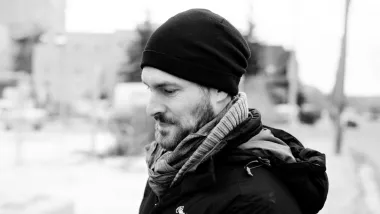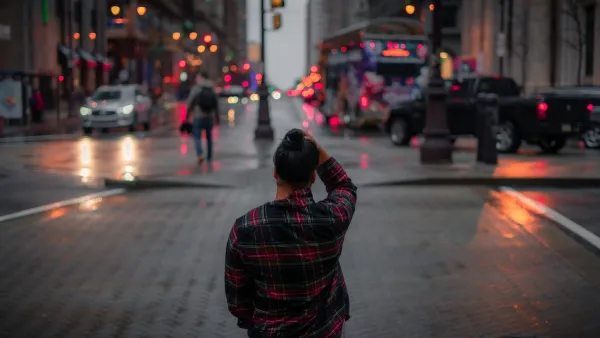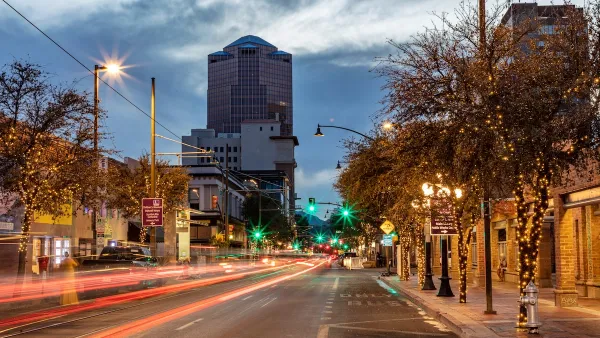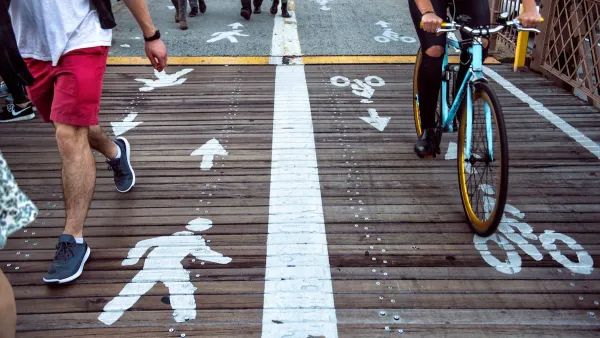The physical requirements for walkability—like narrow streets and wide sidewalks—aren't always enough to compel the activity of walking. How can we reorient toward the primal activity of walking?
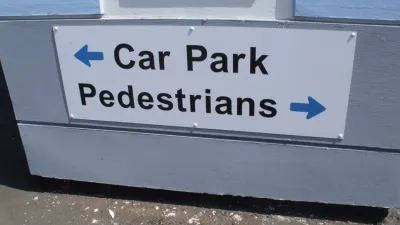
I walk to work in about ten minutes, give or take jaywalking and red lights. I walk through one of the more dense areas in Calgary, an area peppered with medium-rise apartment buildings (65.9 units per hectare/26 UPA). According to Walk Score I live in a “Walker’s Paradise” where my “daily errands do not require a car” (97 out of 100).
It appears my neighbourhood has achieved the “Planner’s Mecca” of walkability, which seems appropriate for a city planner who loves cities, wandering about in them, strolling, sometimes aimlessly adrift in the city’s ingredients. But one block from my flat, a chain pharmacy has shortened its hours. The boutique clothing retailers around the corner struggle to attract business. The chain coffee shop down the street from them now closes at 6 PM on Sundays. Where are the wanderers?
Community Builders recently provided a succinct overview of the literature on walkability. They identified three key elements:
- One, physical access and infrastructure: wide sidewalks and narrow streets provide the physical comfort needed for pedestrians;
- Two, places to go: destinations are the necessary amenities to live your day-to-day life from grocery stores to shops to cultural spaces;
- Three, proximity to home: ten minutes is the generally accepted walk time before a person will find an alternate mode of travel to his desired destination.
It appears that if you plan for walkability, people will walk. But it isn’t so simple.
Density tends to correlate with walkability, as a larger catchment of people enables the financial viability of commercial areas. More shoppers facilitates more shopping.[i]
There’s visual interest too. Is it a “nice” walk along the way to where you need to go? Directly and indirectly Jan Gehl and James Howard Kunstler have spoken to this.
Or perhaps one is forced to walk because driving is too expensive; or one has recognized that driving in cities is stressful, unhealthy, not enjoyable and therefore motivated to walk.
Or it’s quicker to walk because the automobile has not been privileged and other modes of travel, walking, cycling and public transit have. A city oriented for the personal vehicle cannot be designed for walking. The infrastructure required to support day-to-day travels in the automobile prohibit walking. They also make walking ugly with garages, parking lots and sound walls.
Or perhaps one’s flat is small and lacks amenities and therefore the occupant simply goes out to be, to be social, connect with others, do laundry, eat, read the paper.
Then there’s the social engineering we’ve endured for most of our lives, nagging us to be defined by the vehicle we drive. That’s pretty much every car commercial isn’t it?
These are perhaps a bit ad hoc, flying over a city of factors that appear to diminish the structural tenets of walkability. Let me try to narrow in on a psychological feature.
Researchers in Australia analysed park users to determine if usage is a factor of opportunity or orientation. They asked if we can only look at walk distance and access to determine park usage. They discovered the formula is far more complex than putting in place built structures.
Opportunity for walking—walkability—adheres to the mantra that the right form will advance use. But park use, the researchers found, did not correlate with proximity. Rather, those who were oriented towards nature—had awareness of and connection to nature—not only travelled farther to get to a park, and spent spent more time in parks, but also spent more time toiling in their yards. They had an emotional connection to nature, and recognized their part in it.
We can extract from this research to make problematic the general elements and concepts of walkability. Opportunity to walk—place to go, distance to go and comfort in going—are not enough to make people walk. Do we actually want to walk? Are we connected to our places? Are we oriented to wander?
Perhaps walkability is too simplistic or abstract for most people to get behind; it’s also one-way. It doesn’t recognize our orientations and those psychological forces that orient us not to walk. Through an analytical lens walkability doesn’t get us very far in explicating our cities, to bettering them, to bettering ourselves.
Making problematic a concept, however, does not subjugate the necessity to make people-oriented neighbourhoods. We need to lobby against those forces—both internal and external to us (in our minds, our social networks, our economy)—that resist our orientation towards one of our most innate capacities. If we’re oriented to walk, to seek the rhythms and joys in everyday life on sidewalks, we’ll perhaps be less inclined to whiz by them in cars.
Connect with me on Twitter @stevenpsnell or Facebook stevenpsnell.
My novel, The Undergraduates, is available for download here, or at any fine ebook retailer.
[i] This requires a large caveat: the Wal-Mart effect. People will drive to price deals, and thus eroding local retail. This phenomenon has been well documented. I’ve written on it previously. “Eroding Cities One Big Box At A Time.”

National Parks Layoffs Will Cause Communities to Lose Billions
Thousands of essential park workers were laid off this week, just before the busy spring break season.

Retro-silient?: America’s First “Eco-burb,” The Woodlands Turns 50
A master-planned community north of Houston offers lessons on green infrastructure and resilient design, but falls short of its founder’s lofty affordability and walkability goals.

Delivering for America Plan Will Downgrade Mail Service in at Least 49.5 Percent of Zip Codes
Republican and Democrat lawmakers criticize the plan for its disproportionate negative impact on rural communities.

Test News Post 1
This is a summary

Test News Headline 46
Test for the image on the front page.

Balancing Bombs and Butterflies: How the National Guard Protects a Rare Species
The National Guard at Fort Indiantown Gap uses GIS technology and land management strategies to balance military training with conservation efforts, ensuring the survival of the rare eastern regal fritillary butterfly.
Urban Design for Planners 1: Software Tools
This six-course series explores essential urban design concepts using open source software and equips planners with the tools they need to participate fully in the urban design process.
Planning for Universal Design
Learn the tools for implementing Universal Design in planning regulations.
EMC Planning Group, Inc.
Planetizen
Planetizen
Mpact (formerly Rail~Volution)
Great Falls Development Authority, Inc.
HUDs Office of Policy Development and Research
NYU Wagner Graduate School of Public Service

























